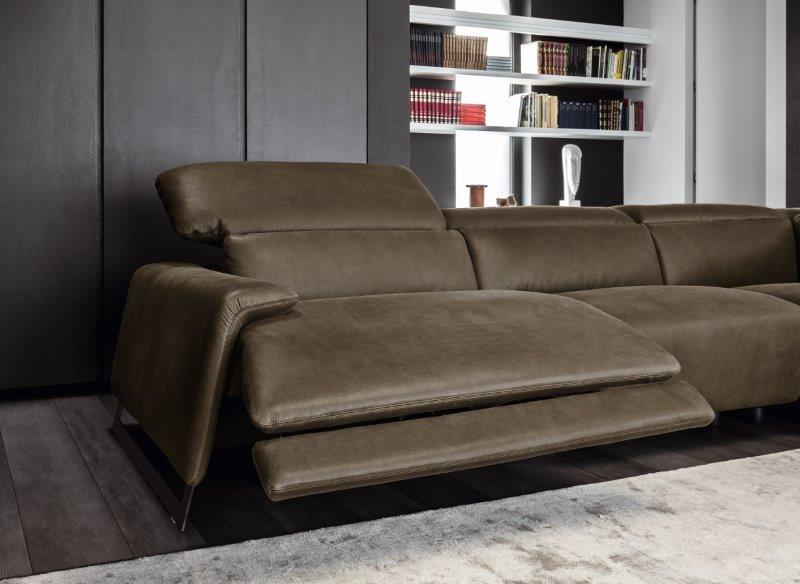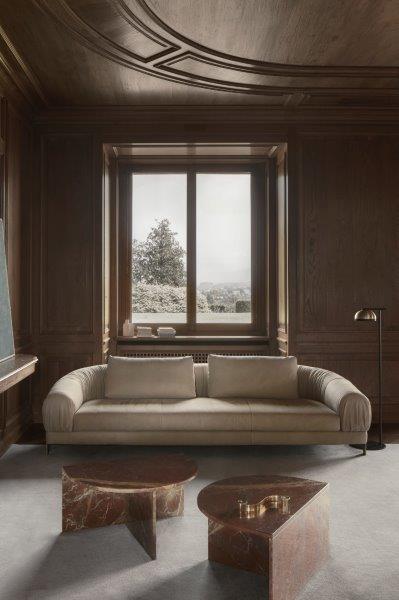If one were to ask a simple question if real and genuine leather can last in humid conditions like Singapore, the quick answer is yes. However, it depends on how much care one puts into maintaining their leather products.
Whether it’s clothing, shoes, accessories, or furniture, humidity can affect your leather’s quality over time.
Leather is highly porous and absorbs moisture from its environment. Thus, too much moisture in the air can cause the leather to rot, while too little can cause it to crack.
Keep reading to find out how you can protect your leather furniture from getting damaged in humid climates.
What is Humidity?
First, let’s understand what humidity is. Humidity is a measure of the amount of moisture or water vapor in the air.
Relative humidity is one of the metrics used to measure air moisture. It is a percentage of the maximum moisture the air can hold at a given temperature.
Relative humidity varies with air temperature and is used frequently in weather forecasts.
This means that cold air has more relative humidity than warm air. Humidity also varies with climate. The most humid places on earth are in coastal areas near the equator, which are extremely warm.
For example, Singapore, Kuala Lumpur, Manila, and Taipei are humid year-round due to their proximity to the ocean and equator. Other places like Chennai and Lahore experience high humidity during the rainy season, whereas cities like Miami, San Diego, and Shanghai are humid during summer.
The ideal humidity level for indoor spaces is between 30% – 50%. Humidity above or below this range can cause discomfort and impact the preservation of various materials in your home, including leather.

Features of Real Leather
Leather is a natural product derived from animal hides, typically bovines like cattle. Real leather is also known as genuine or full-grain leather, as it retains the natural grain and texture of the hide.
While it is tanned and treated to preserve it, leather is still a highly porous material.
Like all natural materials, animal hides have pores that remain even after processed into leather products. These pores allow the leather to breathe, absorbing and releasing moisture in the air.
Because of this, excessive or reduced air moisture can make leather vulnerable to damage if not cared for properly.
How Does Humidity Affect Leather?
Humidity can have a positive effect on leather at the ideal amount between 30% to 50%. Humidity at this level can help to keep leather upholstery soft and supple as it absorbs moisture from the air. It also helps prevent the leather from becoming brittle and dry, which can lead to stiffness and cracking.
On the other hand, prolonged exposure to excessive or reduced humidity levels can damage your leather furniture. Types of damage include:
Loss of Shape
A new leather sofa will naturally develop comfort wrinkles as it adjusts and settles into the new environment. Wrinkling is a normal part of the aging process of full-grain leather upholstery.
However, comfort wrinkles don’t extend beyond the sofa’s initial use unless affected by other factors like temperature and humidity.
Generally, leather can stretch and lose shape when exposed to moisture and high heat for long periods of time. Air moisture can be advantageous to genuine leather as it can soften it, but too much makes it pliable and prone to stretching.
Overstretched leather sags and wears out faster with friction from regular use. Additionally, it causes your luxury sofas to look old and worn out, giving them a short lifespan.
Keeping your genuine leather at the ideal humidity levels will help minimize the risk of stretching and loss of shape.
Additionally, it’s necessary to use recommended leather care products, such as leather conditioners, to keep leather soft and supple. Those with leather furniture should also avoid exposing it to excessive heat and direct sunlight.

Mold and Mildew
Genuine leather can develop mold and mildew when exposed to high moisture and humidity. Leather can get oversaturated in a high humidity environment, creating the ideal conditions for mold and mildew to grow.
Moreover, poor ventilation, damp environments, and cleaning your leather sofas with chlorinated water can also cause mold and mildew to develop.
Removing mold stains from your leather sofa can be tricky if the stain gets embedded in its fibers. Mold on your furniture can also cause respiratory issues and spread to other items in your house.
Therefore, it is better to prevent mold from staining your leather seat and giving it a musty odor by ventilating and dehumidifying your space.
If you notice mold or mildew on your sofa, act quickly and clean it immediately to prevent damage. Putting your leather furniture in the sun can help reduce excess moisture by drying it out..
The sun also has a bleaching effect, which reduces mold stains on the leather.
After drying your leather, brush off the mold with a soft upholstery brush and vacuum the excess. Afterward, spray the moldy section with a solution of one part vinegar mixed with one part distilled water. Wipe off with a clean cloth and allow the leather to air dry in a ventilated place.
Discoloration and Fading
When leather absorbs excess moisture due to high humidity, it can cause the dye to become diluted or faded. Full-grain leather is often dyed with a soluble aniline dye to produce more color variations than its original color.
Natural leather is soft brown by default, and aniline dyes help to achieve alternative colors like black, red, white, gray, blue, and others.

Aniline dyes are carbon-based substances for coloring wood, leather, and fabrics. The dyes come in various colors, from dark tones to light hues. So, furniture makers often use aniline dyes to produce different colored leather items for various design styles.
However, aniline-dyed leather is more porous than other types, as the leather surface is left unsealed without a top coat.
Because of this, the leather absorbs moisture and stains more quickly when exposed for a long time. Furthermore, excess humidity can cause a chemical reaction with the leather’s natural oils due to oxidation, discoloring the leather.
So, to keep your full-grain leather looking fresh, avoid prolonged exposure to high humidity and direct sunlight. We also recommend using protective leather care products like conditioners and sealants to preserve the color and finish of your luxury leather sofa.

How Does Low Humidity Affect Leather Furniture?
Low humidity is when air moisture is below the ideal level for your environment. The recommended relative humidity for indoor spaces is between 30% to 50%.
Below 30% is considered low humidity and can be harmful to your health and natural materials like leather and wood.
Genuine leather requires a certain amount of moisture in the air to remain soft and supple. When the air is dry, it absorbs moisture from the leather, making the leather dry, brittle, stiff, and prone to cracking.
Dry air can also cause your leather to shrink, making it tight and uncomfortable to sit on. To prevent your leather sofas from getting damaged, you can use a humidifier to add air moisture to your environment.
Additionally, we recommend using a leather conditioner regularly to lock in the moisture in the leather to prevent it from getting dry. Keeping your leather items away from direct sunlight is another preventive measure that can protect the leather from shrinking and fading.
Conclusion
Real leather is a porous material that absorbs and loses moisture to the air. If the relative humidity in your home is ideal, your leather furniture can last for many years.
Too much humidity in the environment can result in the leather developing mold. On the other hand, low humidity can cause the leather to shrink and crack.
Always make sure you store your luxury leather furniture in a cool, dry place and avoid exposing it to excessive humidity so it lasts a long time!